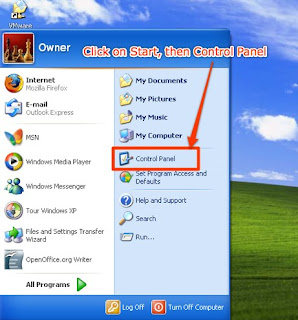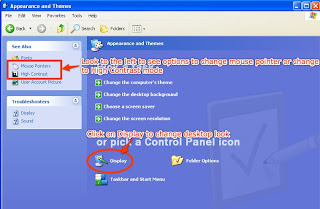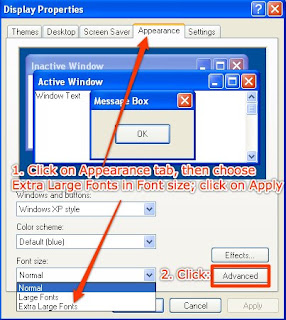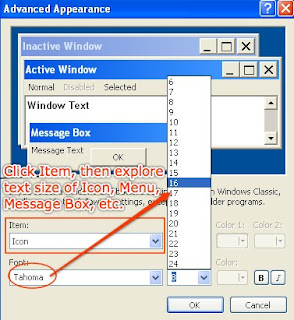Del.icio.us is a social bookmarking website. What is "social bookmarking," you ask? Well, first of all, it's a way to save your favorite websites in a central place on the web, where you can access them from whatever computer you're sitting in front of. But the real power of social bookmarking comes in being able to share your bookmarks with others, and in finding new resources through other people's bookmarks. There are several social bookmarking websites, but here are the directions for Del.icio.us:
1. Go to www.delicious.com
2. Click on Register (top right link between Login and Help).
3. Create a username and password. Your username will be the name through which people will be able to locate your bookmarks.
4. Once you've registered, click on the Help button, and look for 'Bookmarking--install the tools for saving bookmarks.' There are links for installing the tools for Internet Explorer, Firefox, and "bookmarklet buttons for any browser" (e.g., Safari). After running the two installers, you should find two new buttons on your browser toolbar.
5. Now go to it! Whenever you find a great website you'd like to remember, click on your Tag button, and you'll see a new window that has the URL listed for you--type in a description if you want, and then type in tags (category words) and click on Save. The tags will really help you find/organize your bookmarks later.
Here's the URL to part of my Del.icio.us bookmarks: http://del.icio.us/VIAccessible/accessibility
Check it out and browse the links I've discovered so far. When you have some sites to share, give us your Del.icio.us name by posting a comment to this blog.
Sunday, November 11, 2007
Saturday, November 10, 2007
Changing WindowsXP Display for Low Vision Users
In my last post, I explained how to change the mouse pointer size in WinXP. Here are some other things you can do to enlarge the desktop without specialized software.
I want to preface these tips by saying that software such as Zoomtext or MAGic are wonderful products to help students who have limited vision access the computer screen. But, what happens for these students when they go home, to the local library, or other places that do not have computers equipped with these software programs? While some students may need the features and screen enlarging capability of specialized screen enlarging programs, other students may be able to access the computer just fine with these "free" alternatives.
To enlarge the desktop font:
1. Open the Control Panel in Windows XP.

2. Click on Display (in Classic View).

In Category View, first click Appearances and Themes:

Then click Display: (Note that in Appearances and Themes, you'll see links to Mouse Pointer and High Contrast, described in previous posts.)

3. In Display, choose the Appearance tab, change the Font size to Extra Large Fonts, click Apply to see how the desktop has changed. Next, click the Advanced button (above Apply).

4. Here's where you can experiment with the Windows menu items. Click on Items, then choose Icon and change the font to 16 point. Click on OK, then Apply, and see what that may have changed on the desktop. Click on Items--Menu, or Items--Message Box, and change the font size for those, as well. Click on Apply after each to see how it has changed text size in various windows. Go ahead and explore some of the other Items to see what happens when you change the font size, or change the Font itself (Tahoma seems to be the default font).

Hopefully, some of these simple and free alterations to the desktop will enable your student to see the basic fonts and menu items to get into programs. From there, he/she may be able to use Windows Magnifier (described in a previous post), to access applications such as Wordpad, the Internet, etc. I'd love to hear comments on this or other suggestions you have to make the computer more accessible to persons with visual impairments.
I want to preface these tips by saying that software such as Zoomtext or MAGic are wonderful products to help students who have limited vision access the computer screen. But, what happens for these students when they go home, to the local library, or other places that do not have computers equipped with these software programs? While some students may need the features and screen enlarging capability of specialized screen enlarging programs, other students may be able to access the computer just fine with these "free" alternatives.
To enlarge the desktop font:
1. Open the Control Panel in Windows XP.

2. Click on Display (in Classic View).

In Category View, first click Appearances and Themes:

Then click Display: (Note that in Appearances and Themes, you'll see links to Mouse Pointer and High Contrast, described in previous posts.)

3. In Display, choose the Appearance tab, change the Font size to Extra Large Fonts, click Apply to see how the desktop has changed. Next, click the Advanced button (above Apply).

4. Here's where you can experiment with the Windows menu items. Click on Items, then choose Icon and change the font to 16 point. Click on OK, then Apply, and see what that may have changed on the desktop. Click on Items--Menu, or Items--Message Box, and change the font size for those, as well. Click on Apply after each to see how it has changed text size in various windows. Go ahead and explore some of the other Items to see what happens when you change the font size, or change the Font itself (Tahoma seems to be the default font).

Hopefully, some of these simple and free alterations to the desktop will enable your student to see the basic fonts and menu items to get into programs. From there, he/she may be able to use Windows Magnifier (described in a previous post), to access applications such as Wordpad, the Internet, etc. I'd love to hear comments on this or other suggestions you have to make the computer more accessible to persons with visual impairments.
Subscribe to:
Posts (Atom)